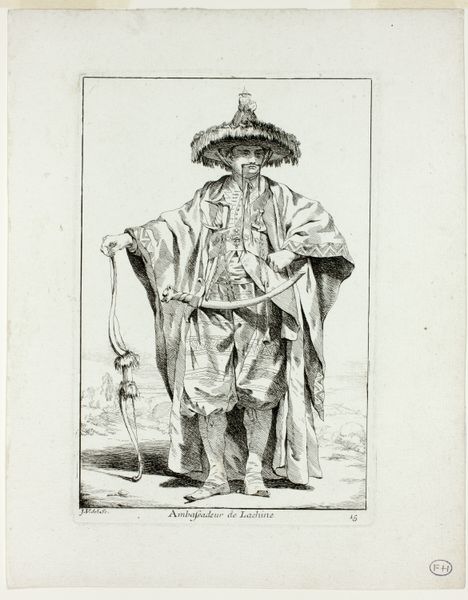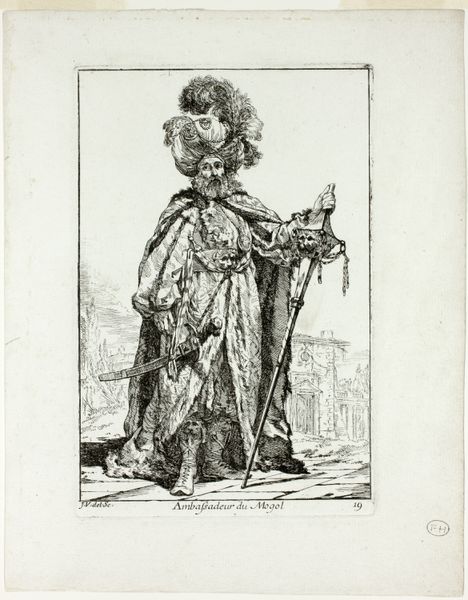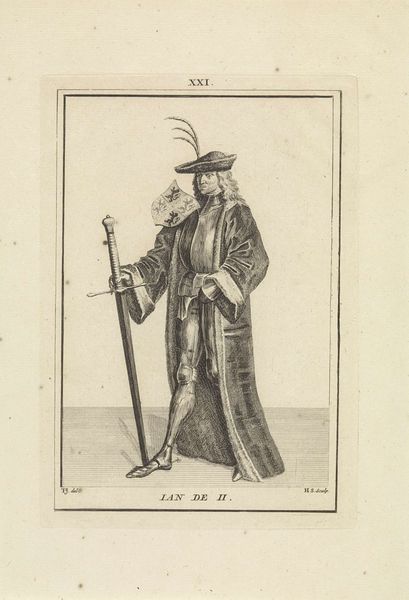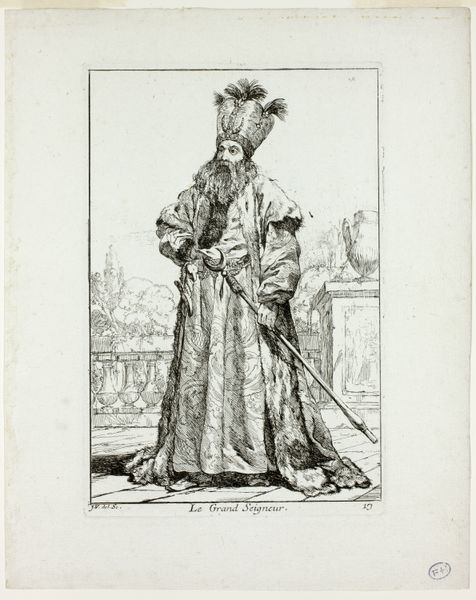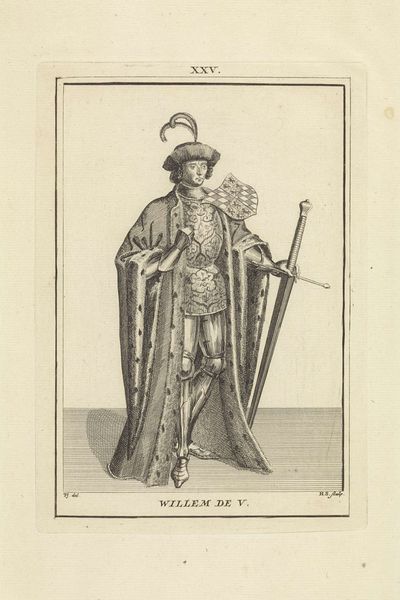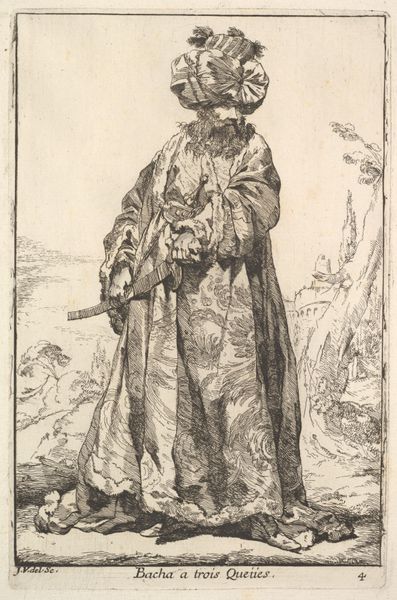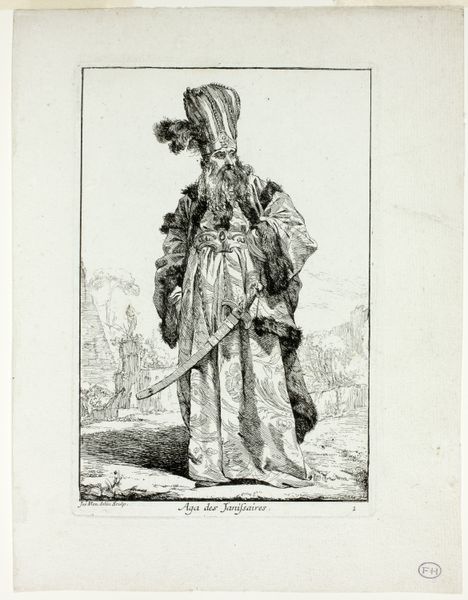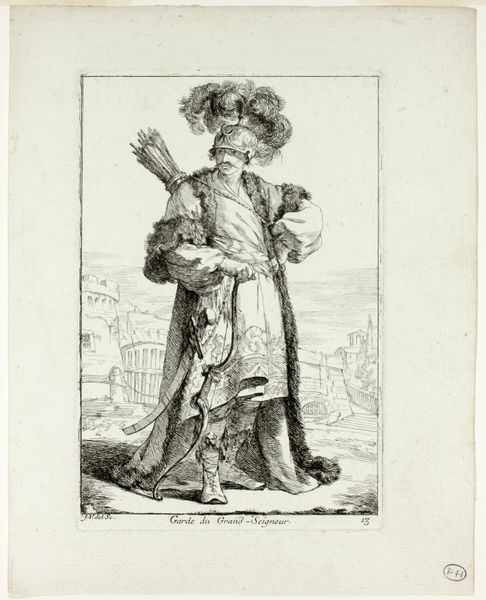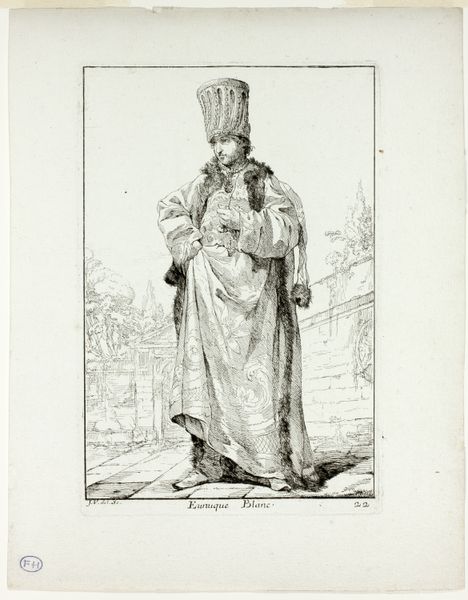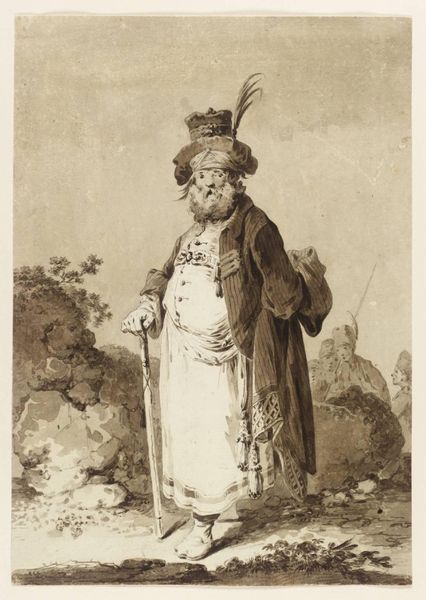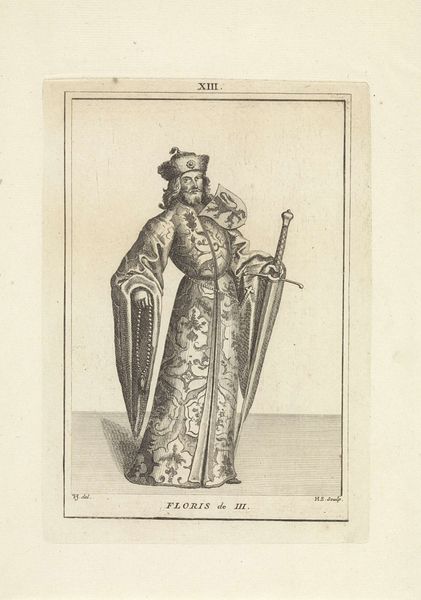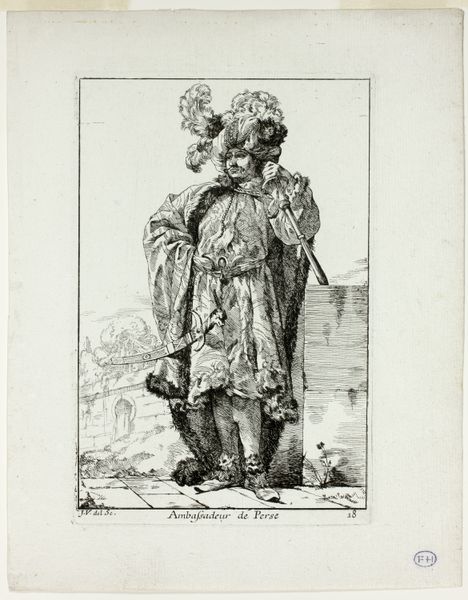
Ambassadeur du Siam, plate sixteen from Caravanne du Sultan à la Mecque 1748
0:00
0:00
drawing, print, etching, paper
#
portrait
#
drawing
#
baroque
# print
#
etching
#
figuration
#
paper
#
france
#
genre-painting
#
history-painting
#
academic-art
Dimensions: 196 × 132 mm (image); 204 × 136 mm (plate); 262 × 206 mm (sheet)
Copyright: Public Domain
Curator: This etching, made in 1748 by Joseph Marie Vien, is titled "Ambassadeur du Siam, plate sixteen from Caravanne du Sultan à la Mecque." Editor: My immediate response is one of unease. Despite the exoticism implied, there’s a definite sense of staged representation, almost bordering on caricature. The stark black and white, coupled with the somewhat stiff pose, lends an air of performativity that feels… forced. Curator: Precisely. It reflects a period fascinated, yet fundamentally misunderstanding, of Eastern cultures. The Ambassador, adorned in elaborate furs and a towering headdress, carries symbols that likely held significant meaning but, when filtered through a Western lens, become theatrical props. Editor: The question then becomes: whose narrative is being amplified? This image was created during a time of burgeoning colonialism. The depiction serves a specific purpose: It exoticizes, rendering the foreign "other" as spectacle for European consumption. What does that reveal about power dynamics? Curator: Consider the architectural backdrop as well. It's a pastiche, hinting at grand Eastern cities, yet generalized and devoid of specificity. It contributes to a flattening of Siamese identity, turning a complex culture into a digestible, and perhaps more importantly, controllable image. Editor: The gaze is interesting, too. The Ambassador stares directly at the viewer, yet there’s little sense of connection or understanding. It feels like we're positioned as voyeurs, invited to gawk at a constructed identity that has little to do with lived reality. I am particularly intrigued by his dress and that ornate saber. Curator: This depiction also plays into the prevalent visual vocabulary of the Baroque, but tempered with emerging Neoclassical restraint in Vien's work. We witness careful attention to line and detail, emphasizing the grandeur associated with diplomatic power…or at least, Europe's perception of it. But as you observed, what are the authentic source and cultural roots of such diplomatic imagery? Editor: Ultimately, viewing it now, we need to ask ourselves what cultural baggage do we bring to this image and how can we be mindful to question the visual tropes and assumptions that shaped its creation and continue to resonate today. Curator: Indeed. Understanding the context is key. It allows us to decipher how imagery functions—revealing embedded biases, exoticized symbols, and even artistic projections of the colonial imagination. Editor: For me, grappling with images like this highlights the importance of a constant reassessment of how art serves as both record and reinforcer of ideologies. Curator: A potent reminder that images, while beautiful, are seldom neutral. They whisper, sometimes shout, about the anxieties and ambitions of their time.
Comments
No comments
Be the first to comment and join the conversation on the ultimate creative platform.
